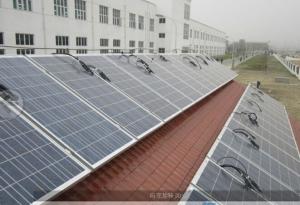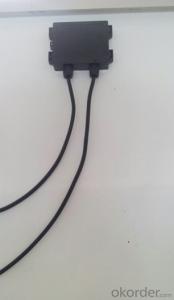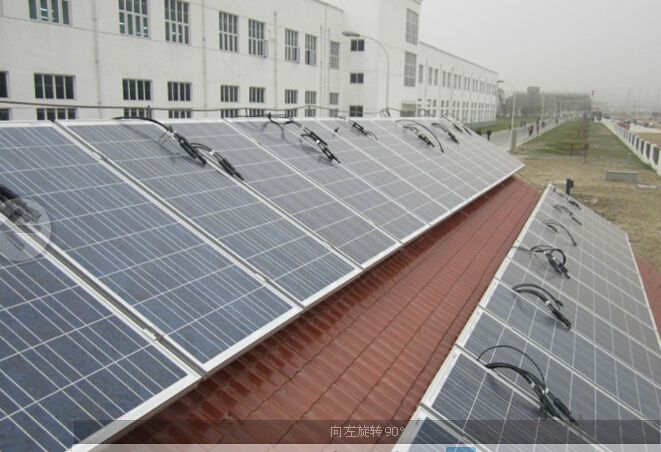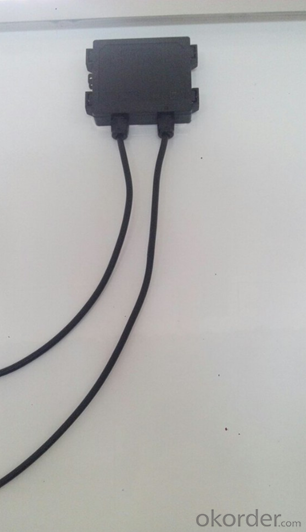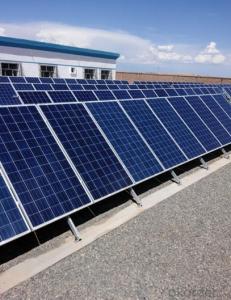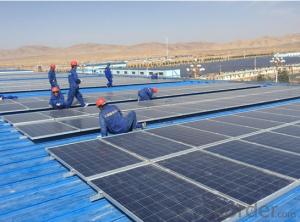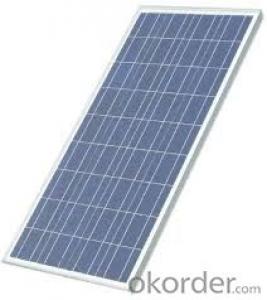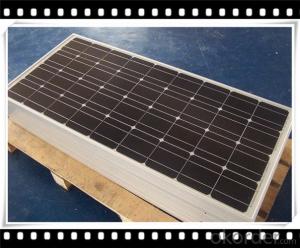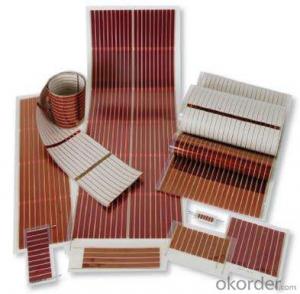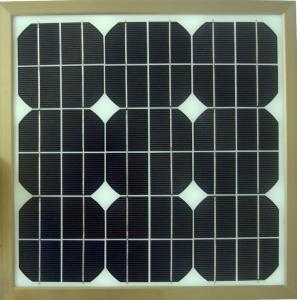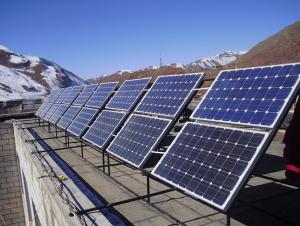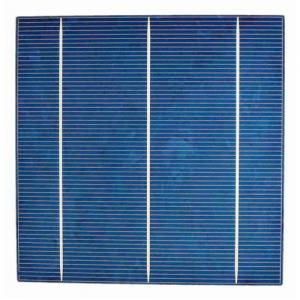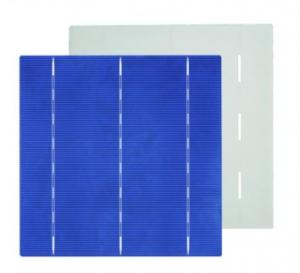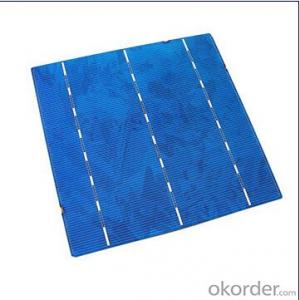High Power Solar Cells - Factor Directly Sale 285W Poly Silicon Solar Module CNBM
- Loading Port:
- Qingdao
- Payment Terms:
- TT OR LC
- Min Order Qty:
- 10 set
- Supply Capability:
- 300000 set/month
OKorder Service Pledge
OKorder Financial Service
You Might Also Like
Quick Details
| Place of Origin: | China (Mainland) | Brand Name: | CNBM | Model Number: | 285W solar module |
| Material: | Polycrystalline Silicon | Size: | 1956*992*50mm | Number of Cells: | 72 |
| Max. Power: | 285W | Cell Size(mm): | 156*156 | Tolerance: | 0~3% |
| Cells Number(pcs): | 6*12 | Weight(Kg): | 25 | Max.Series Fuse Rating (A): | 15 |
| Max.System Voltage-IEC(V): | 1000 |
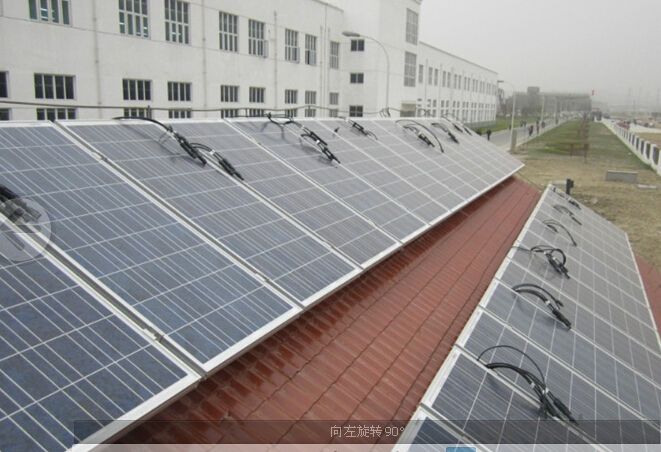

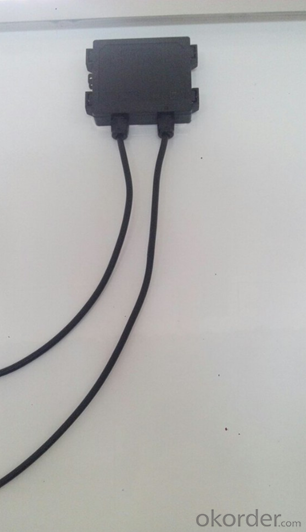
Polycrystalline Solar Module
XH250P(72)/ XH275P(72)/ XH300P(72)
Models | XH250P(72) | XH285P(72) | XH300P(72) |
Max. Power (Pmax) | 250Wp | 285Wp | 300Wp |
Optimum Operating Voltage (Vm) | 34.8V | 35.7V | 35.9V |
Optimum Operating Current (Im) | 7.18A | 7.77 A | 8.08A |
Open-circuit Voltage (Voc) | 43.8V | 35.4 V | 44.4V |
Short-circuit Current (Isc) | 8.04A | 8.24 A | 8.62A |
Cells efficiency | 14.6% | 15.8% | 16.8% |
Dimension L×W×H (mm) | 1956×992×50mm | 1956×992×50 | 1956×992×50 |
Power Tolerance (Pmax) | 0 ~ +3% | 0 ~ +3% | 0 ~ +3% |
Numbers of cells | 60pcs poly solar cell 156×156mm | 72pcs poly solar cell 156×156mm | 72pcs poly solar cell 156×156mm |
weight | 25kg | 25kg | 25kg |
Max system voltage | 1000V DC | 1000V DC | 1000V DC |
Temperature cycling range | -40℃ ~ +85℃ | -40℃ ~ +85℃ | -40℃ ~ +85℃ |
- Q: Can solar cells be used on satellites?
- Yes, solar cells can be used on satellites. In fact, they are commonly used to power satellites in space by converting sunlight into electricity.
- Q: Can solar cells be used in agricultural farms?
- Yes, solar cells can be used in agricultural farms. They can be utilized to generate electricity for various purposes on the farm, such as powering irrigation systems, lighting, and machinery. Solar energy can help reduce dependence on fossil fuels, lower energy costs, and promote sustainable farming practices.
- Q: How long do solar cells last?
- Solar cells typically last for about 25 to 30 years. However, with proper maintenance and care, they can continue to function effectively for even longer periods of time.
- Q: Can solar cells be used on backpacks or camping gear?
- Yes, solar cells can be used on backpacks or camping gear. These portable solar panels can be attached to backpacks, tents, or other camping gear to harness solar energy and charge devices such as smartphones, GPS devices, or portable speakers while on the go. This allows campers and hikers to have a reliable source of power in remote locations and reduces the need for carrying extra batteries or relying on traditional power sources.
- Q: What are the applications of solar cells?
- User solar power: - small power supply 10 ~ 100W range, for remote areas such as the plateau, islands, pastoral areas, border posts and other military life electricity, such as lighting, television, tape recorders and so on. - 3 ~ 5KW home roof grid-connected power generation system. - PV water pump: to solve the non-electric areas of deep wells drinking, irrigation.
- Q: Can solar cells be used in desert areas?
- Yes, solar cells can be used in desert areas. In fact, desert regions are ideal for solar energy production due to their high levels of sunlight and low cloud cover. The arid conditions also help keep solar panels clean and free from debris, maximizing their efficiency.
- Q: What is the current situation and the recent progress space solar cells in China?
- The power generated by solar cells is the main and most important energy sources in the out spacer, which makes this technology so vital in our country. You can imagine if we have enough and stable power generation generated by power cells, we will make a huge progess in the research and development in space.
- Q: Can solar cells be used for powering remote medical clinics?
- Yes, solar cells can be used for powering remote medical clinics. Solar energy is a reliable and sustainable source of power, particularly in areas where access to the electricity grid is limited. By installing solar panels, remote medical clinics can generate their own electricity, ensuring a continuous power supply for essential medical equipment, lighting, refrigeration, and other critical healthcare needs. This enables the provision of quality healthcare services in remote areas without relying on traditional energy sources.
- Q: How do solar cells perform in humid climates?
- Solar cells can still perform efficiently in humid climates. However, high humidity levels can slightly reduce the overall performance of solar cells due to the moisture in the air. The moisture can create a thin film on the surface of the solar panels, which reduces the amount of sunlight that can be absorbed by the cells. Additionally, increased humidity can also affect the electrical connections and can potentially lead to corrosion or damage over time. Nonetheless, advancements in solar cell technology, such as anti-reflective coatings and improved waterproofing, have helped mitigate the impact of humidity on solar cell performance.
- Q: I am a purchasing manager for a EPC engineering company, and we are planning to purchasing some 4bb solar cells for one of our project in Taiwan, can I get a quotation online?
- I did the purchasing for my client once, and I found out you can get to talk to many sellers if you spend some time searching on alibaba.
Send your message to us
High Power Solar Cells - Factor Directly Sale 285W Poly Silicon Solar Module CNBM
- Loading Port:
- Qingdao
- Payment Terms:
- TT OR LC
- Min Order Qty:
- 10 set
- Supply Capability:
- 300000 set/month
OKorder Service Pledge
OKorder Financial Service
Similar products
Hot products
Hot Searches
Related keywords
